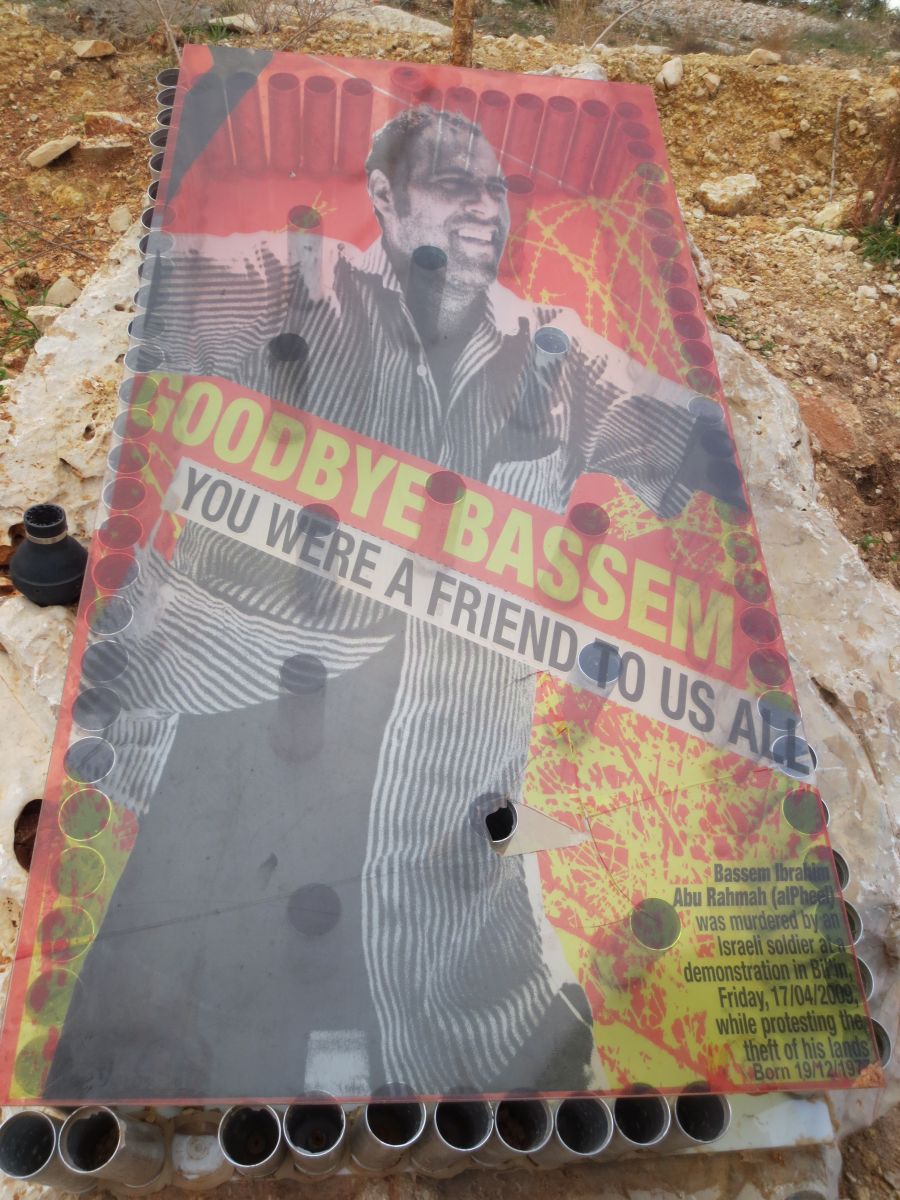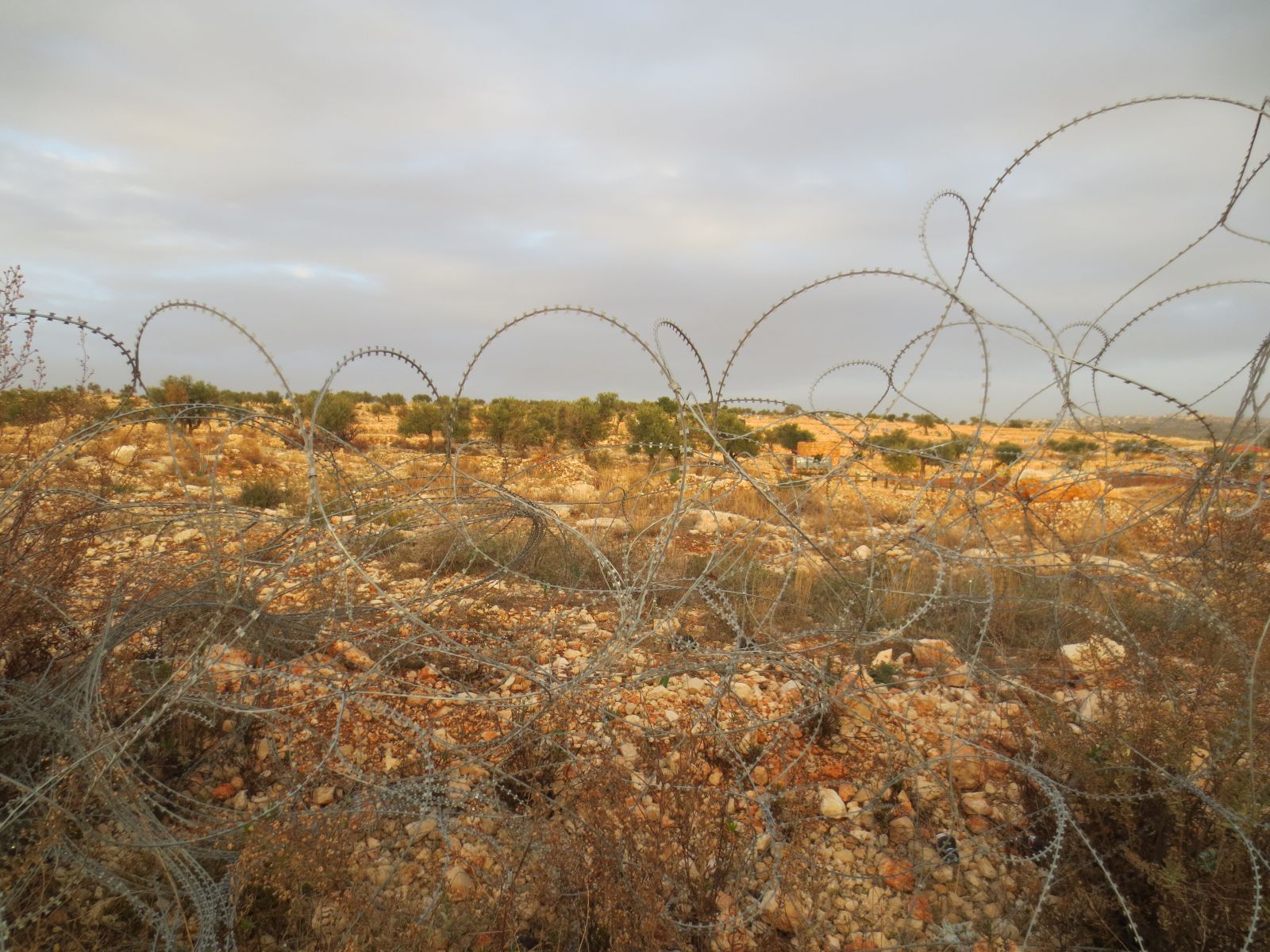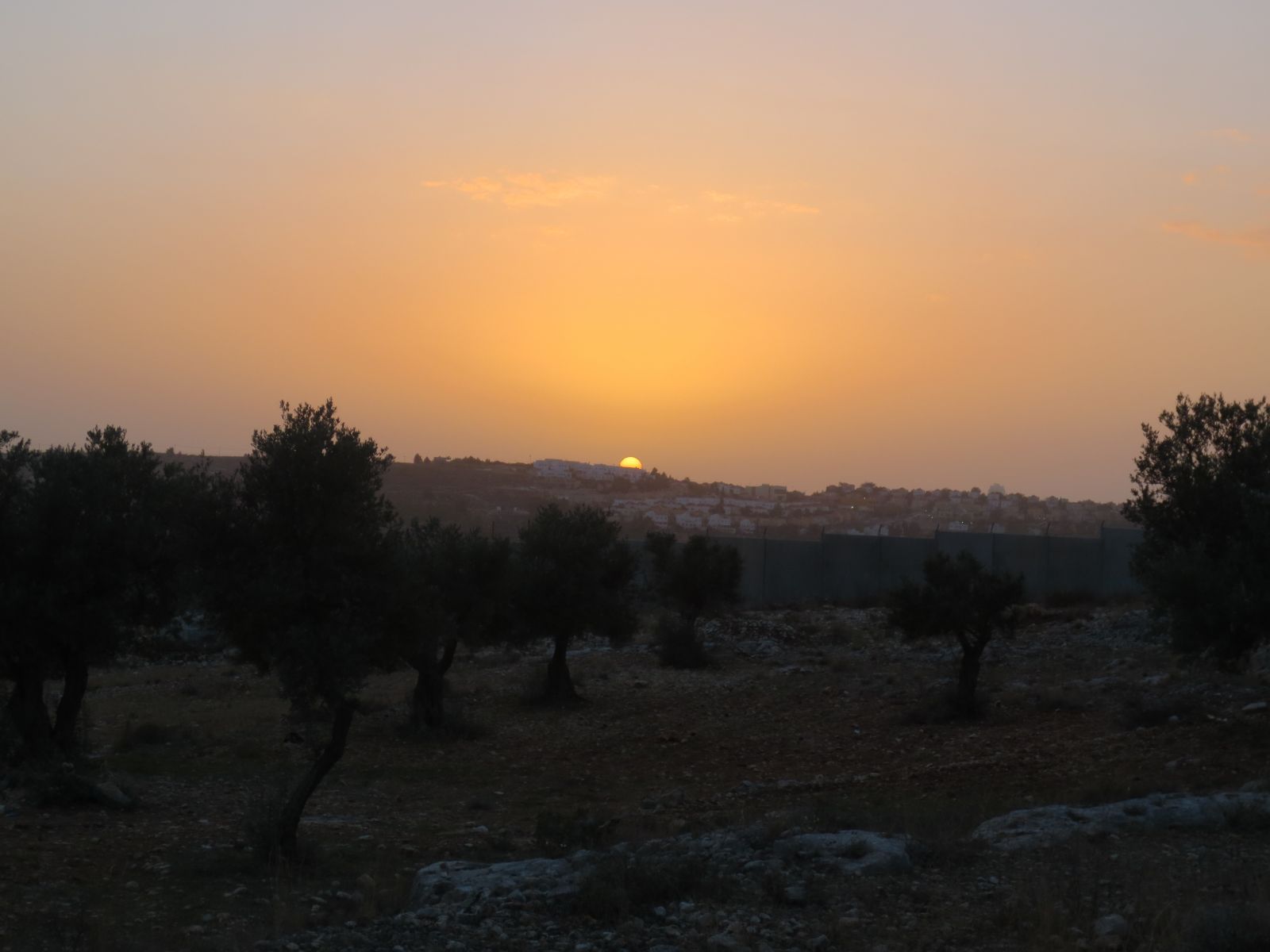Bil’in: the village of the creative non-violence
gennaio 14, 2014 in Palestina, Traduzioni da Anna Zorzi

His name was Bassem, which means to smile….and that was the way he greeted everyone. But we called him “Phil”, which means elephant, because he was as big as an elephant, but he had a child’s heart. In a land where dying a natural death is getting quite impossible, everybody has their own beloved to mourn and their own martyrs to commemorate. The small village of Bil’in, in the limelight after the wonderful documentary Five broken cameras, is no exception.
Your tour in this symbol of the non-violent Palestinian resistance starts from this unusual mausoleum, which was built in memory of the activist killed by a tear bomb. This building is unusual because not flowers but tear bombs are left on Bassem’s commemorative plaque, the same ones thrown at all those people who have been gathering for eight years now every Friday at the Wall to protest against the Israeli occupation. Eight years: such a long time! Protesting in Bil’in is not easy task: demonstrating people find themselves standing up to armed soldiers ready to lash out indiscriminately in the crowd just to repress the protests.
You look around. Ramahalla is only a few kilometres away and yet the panorama is changed: not wild building speculation any longer , but a landscape which reminds you of that old rural Italy before the economic boom, painted on postcards or portrayed in some neorealistic films. But marks of the Israeli Occupation bring you back to the present: a plain of olive trees, a huge complex of red-roofed houses, and the wall remind you that you are in an occupied territory and not in a bucolic place from Arcadia by Sannazaro. Your tour guides, whose faces look familiar to you because you have already seen in the film by Emad Burnat, show you proudly their last conquest of their struggle: it is a narrow street where, according to the plans of the Israeli government, the so-called protection barrier would be erected. After a long waiting, the activists were able to obtain the permit from the Israeli authorities to divert the wall from its original planned track and to give some hundreds of dunams of confiscated land back to the legitimate owners.

It may sound a poor consolation, as the row of the red-roofed houses and the barbed wire are only a few steps away. But in Palestine winning against “ the only democracy of Middle East”, which enjoys the support of the main media and countries in the world, means a lot to the local people, who have baptized this small piece of land conquered back “street of freedom”. What a great discovery for me who, since the age of six, has always seen the word “freedom” linked to a mean man from Arcore and only now can realize its true meaning!
While walking the short distance to the massive wall, you stop to watch the playground the activists have been able to create to keep children off the street and the bombs. Actually it is a very small piece of land with some roundabouts or swings overlooking the protection barrier and the building sites which never stop constructing houses for the “settlers”. The children of our rich Europe , used to theme fun parks as large as cities, would whine at such a poor playground, but to Bil’in it represents a positive, creative resistance, which does not resign itself to counting its dead, wounded and imprisoned.

The next stop of our walking is the wall. There, in front of it, you almost feel dizzy because of the schizophrenic reactions it causes behind you and in front of you. If you turn you can see the warm colours of a land in the light of the sun setting behind the concrete barrier, among the olive trees. Olive, o-live! – wrote Vittorio about the symbol of Holy land- an ode to life passed down generations. But if you look in front of you you can see a scenery of death, garrisoned by control towers you can hardly distinguish. Bil’in people have “humanised” this scenery setting an exhibition of works of art made out of recycled war material. Among the various things on display a small Handala made with barbed wire and a tear bomb attracts your attention.
On your journey back, two young soldiers in their twenties get on the coach for a “regular” check of documents. While your passport is being examined, your mp3 is defiantly tuned to Stay human by 99 Posse. Will they ever be able to stay human, despite their arrogance, military boots and sub-machine gun hanging down their necks?





